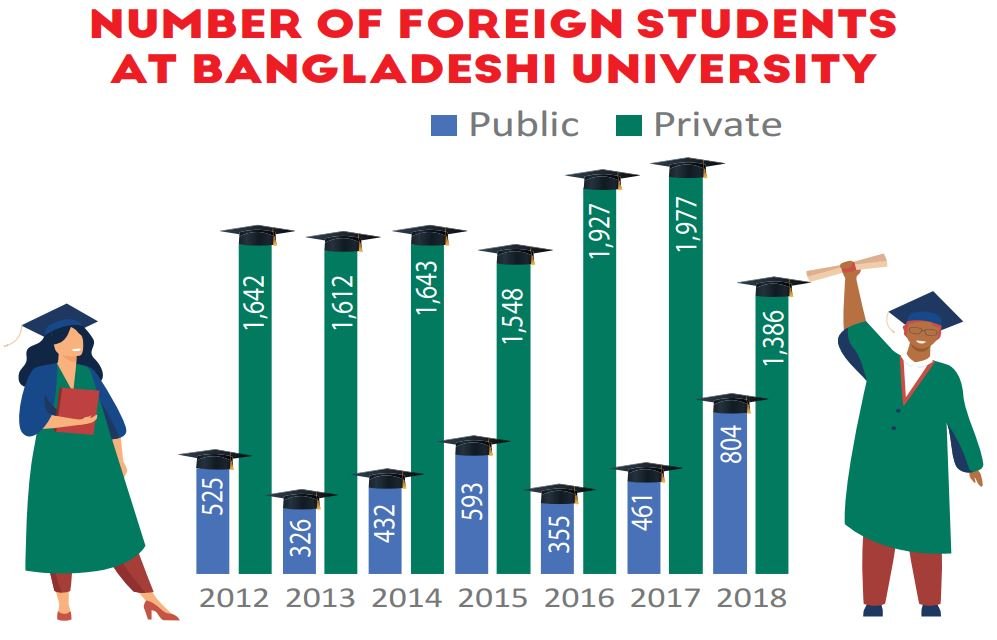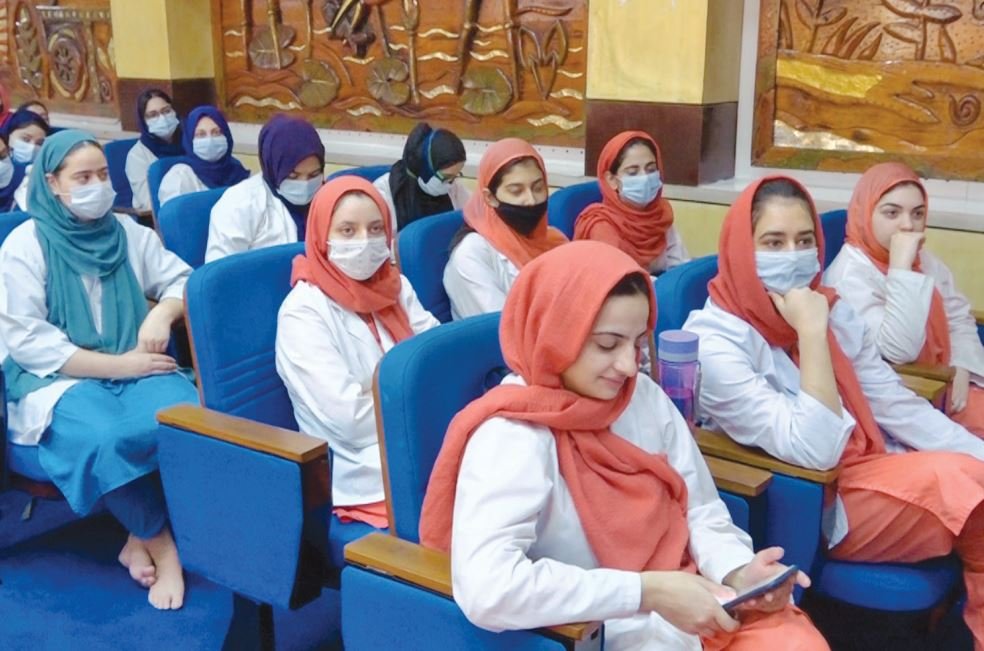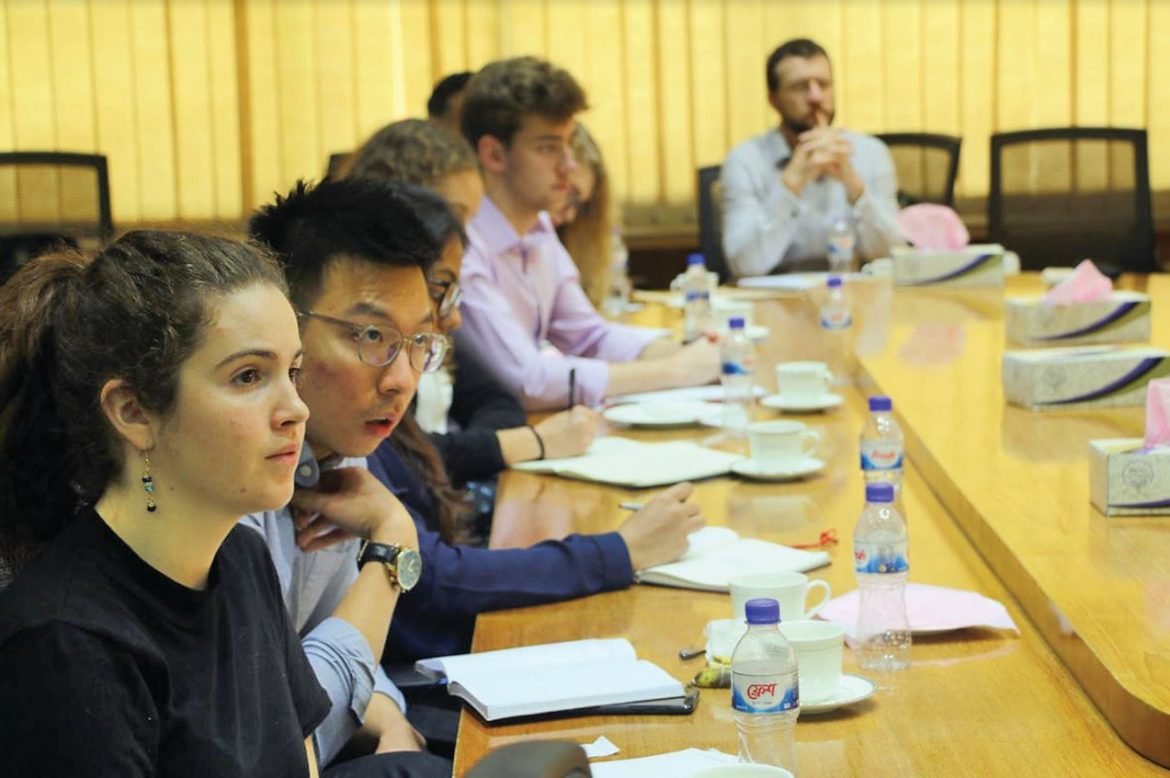Universities across Bangladesh have been attracting international students by offering a plethora of degrees to choose from. Though the primary participation of students is coming from the south Asian subcontinent and Africa, the number of students from developed countries is also increasing at a steady rate. Some of these university feature flexible criteria for those students while some others have quotas for international students to drive higher student participation from the international community, reports Press Xpress.
There was a time when the number of foreign student admissions in the country’s autonomous, public and private universities was negligible. This was primarily due to the failure of attracting international students in higher education. For the international community the offerings from universities in Bangladesh seemed negligible to none. Language-related problems, lengthy admission process, and political instability are among the reasons for the poor number of overseas students at the varsities.
When it comes to international admission, a consistent communication has always been of utmost importance to the global community. As it is a matter of young students, understanding and taking information about the university in consideration specially when it comes to a foreign university is of utmost priority in their decision-making process. But for the longest time, the lack of proper communication of a number of offerings starting from course materials, admission process, tuition payment system, residency etc. has kept international students from opting for universities in Bangladesh.
A recent UGC’s annual reports shows that the number of foreign students enrolled at public and private universities for higher studies has significantly increased in 2020 where the number of foreign students in public universities for higher education has almost doubled relative to the previous years. While the already high number of foreign students in private universities has experienced a notable increase at the same time. Therefore, establishing the premise that the participation of foreign students has gone through an overall increase in the entire higher education ecosystem of Bangladesh.
The 47th Annual Report-2020’ published by the University Grants Commission (UGC) recently has shed some insightful light on this matter. Due to the global epidemic Novel Coronavirus, all the universities throughout Bangladesh were closed for nearly a whole year from March 2020. However, a vast majority of the universities kept pursuing their academic activities via online Edu-tech platforms. This allowed them to overcome the barrier to education that the pandemic had created while saving the valuable time of their students. At the same time this crisis paved the way for a new form of education integrating a plethora of technology and versatility contrary to the traditional form that was in practice.

According to UGC, the primary reason behind the exponential and widespread increase in the number of foreign students in higher education level throughout the universities in Bangladesh is due to the extension over online education which helped combat the pandemic in 2020. Owing to that, the entire education system of Bangladesh is going through a complete overhaul to transition into its digitized alternate. This has created opportunities for previously believed complicated systems such as hybrid classes which is more suited to adapt to the volatile nature of the pandemic and readily switch between both online and offline education system while keeping both running at the same time. It is thanks to adaptable and convenient systems like these paired with improved digital communication infrastructure to better address queries & concerns, the entire higher education ecosystem is witnessing a rise in the number of foreign students.
According to a UGC report in 2020, out of the 46 public universities (excluding 4 new universities) throughout Bangladesh, there are 767 foreign students studying in 23 universities. This number was 472 in 2019. This illustrates how distinctly the number of foreign students increased in when the education system was digitized.
Throughout the last decade the amount of foreign students’ participation across public universities in Bangladesh had a very different face. Back in 2010, the number of students was only 210. Although the number doubled to 525 students in the year 2012 but it quickly went down to only 326 students in 2013. In the following years 2014 & 2015 the numbers of foreign students experienced a steady increase from 432 & 593 respectively before going back down to 355 students in 2016. Although the year 2017 expected a steady increase to 481 students, in 2018 the number jumped to 804 foreign students.

For the private university ecosystem, the picture was very similar witnessing a jump in the number of foreign students. According to the 47th annual report of UGC, the number of foreign students studying in private universities across Bangladesh was 1,550 in 2020. Whereas the number of foreign students studying in 2019 was 1,467. This year, foreign students were studying in 32 out of the 96 private universities.
Pursuing higher education in 2020, students from 26 countries all over the world were studying in various private universities of Bangladesh. These countries include: India, Pakistan, Sri Lanka, Nepal, Bhutan, Maldives, China, Japan, USA, Yemen, Palestine, Gambia, Morocco, South Korea, Canada, Mauritania, Tanzania, Austria, Rwanda, Djibouti, Somalia, Nigeria, Afghanistan, South Sudan and Bahrain.
Universities across Bangladesh have been attracting international students by offering a plethora of degrees to choose from. Though the primary participation of students is coming from the south Asian subcontinent and Africa, the number of students from developed countries is also increasing at a steady rate. Some of these university feature flexible criteria for those students while some others have quotas for international students to drive higher student participation from the international community.
UGC reports a steady increase in the number of foreign students every year. According to statistics, students from several developed countries like the US, Japan, China, Canada etc. have come to study in Bangladesh. This allowing a positive representation of the reputation of Bangladesh across the international community at the same is creating a channel for earning foreign currency.
But according to experts, the factors negatively affecting the number of foreign student participation reach far and wide across initiatives such as convenience and digitization. And if we do not address those ingrained problems, the number that for the first time in a decade could be pushed towards an increasing trend would instead fluctuate downwards rapidly.
One of the primary concerns for the international students while trying to decide on enrolling in Bangladesh to pursue higher education are the international rankings. Apart from a few exceptions, most of the universities in Bangladesh have a very poor performance in international university rankings such as World QC Ranking. The metrices that are negatively contributing to the rankings are academic publicity, scholarships, the trend of teaching in local curriculum & political unrest.
Expert opinions suggest updating universities websites to make it more user friendly and increasing the amount of information concerning foreign admissions. Initiatives like opening a separate desk or online portal for catering to international students and taking step additional steps for publicity and promoting universities internationally to attract foreign students in the country. According to experts, although the steady rise in the number of foreign students throughout both public & private universities in Bangladesh is a good news but the level or rate of increase is not up to the satisfaction level.

Even the country’s one of top public university, Dhaka University is also failing to attract foreign students as only 7 foreign students were admitted to the university in 2019-20 session and the number was only 2 in 2017-18 session, 16 in 2016-17, 4 in 2015-16, 8 in 2014-15 and 11 in 2013-14 academic session for pursuing higher studies.
Initiatives to introduce strong promotional campaigns revolving around the offerings like scholarship, course offerings or other benefits from the universities have now become an absolute necessity. That way the opportunities will become more distinct and appealing to the students of international community.
The Vice-Chancellor of Shahjalal University of Science and Technology (SUST), Prof Dr Farid Uddin Ahmed in an exclusive conversation with this correspondent said that lack of proper residential facilities, plus lengthy admission process prevent the foreign students from opting for higher education at the public universities. He also added that the authorities should take initiative to make an easy admission process while ensuring proper residential facilities at the universities to attract foreign students.
World University Vice-Chancellor Prof Dr Abdul Mannan Chowdhury identified four key reasons behind foreigners choosing Bangladeshi private universities for higher studies. “The academic costs at private universities are low, Bangladesh’s weather and environment are better than African nations, the universities’ attempts to maintain a good standard in education, and increased use of IT to improve quality of higher studies” he informed.
The Vice-Chancellor of Jangannath University, Dr Mizanur Rahman informed that the private universities ran campaigns abroad to attract students, an option that is not open to the public universities. Moreover, private universities provide foreign students with facilities like separate living arrangements to better fit their needs.
UGC Chairman Prof Abdul Mannan attributed the declining number of foreign students at public universities to a lack of campaigns. “Students from many countries including Bhutan, Nepal and Malaysia used to once come to Bangladesh for higher studies. There were many countries that did not have universities to offer higher education, but the situation has changed (and) as a result, very few students from those countries come here now.” he said. The UGC chairman also added that many other countries are now focusing more on vocational and job-oriented education.
The educational sector of Bangladesh has been presented with an unexpected opportunity due to that pandemic thanks to the prompt transition to digitization of educational system. But that only solves the most recent sphere of problems, the underlying issues restricting the number of foreign students in Bangladesh remain unchanged. The only way to utilize this unique opportunity and positively impact the reputation of Bangladeshi universities in the international academic community, is by taking rapid actions to address the underlying problems. At the same time, universities need to work alongside government agencies/departments, such as law enforcement agencies and immigration department to deal with issues regarding international students. By facilitating higher amount of international students to attend universities in Bangladesh, the entire educational system will reach new heights of development and create a stronger backbone of the nation.


